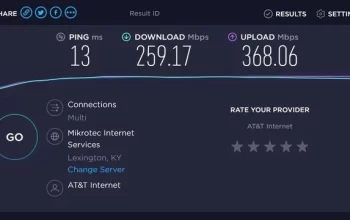The Internet is a global network of computers connecting devices, businesses and institutions. It is the largest computer network globally with over 50,000 sub-networks and 4 million systems.
The internet works by enabling data transmission and reception between any device that can communicate using the correct protocols, accomplished through packet switching.
It is a network of networks
The Internet is a global network that links millions of computers together. As it’s decentralized, there is no central control point and any device or computer capable of sending and receiving data correctly can be part of the Internet.
At its core, the Internet is comprised of a set of protocols that enable devices to exchange information and speak a common language. These standards include Ethernet, the Internet Protocol (IP), and TCP/IP.
Each of these protocols has specific rules that devices must abide by in order to communicate. Without these requirements, exchanging information between devices on the Internet would not be possible.
Sending data over the Internet requires computers to first break it into smaller packets and convert them into pulses of light or electricity. These packets are then carried by wires, cables and radio waves across the Internet at light speed – allowing it to function efficiently even when thousands of computers send data simultaneously.
It is a global system
The Internet is a worldwide system connecting billions of computers, devices and people. It consists of millions of private, public, academic, business and government networks connected through electronic, wireless and optical networking technologies.
The Internet provides access to an abundance of resources and services, such as the World Wide Web (WWW), electronic mail, telephony and peer-to-peer file sharing networks. Its infrastructure consists of long distance networks made up of fiber optic cables along with internet exchange points connecting these networks together.
Since its founding in 1950, scientists from around the globe have contributed their creative insights to designing the Internet. Overcoming design incompatibilities, managing data traffic to prevent congestion and chaos, and reaching international agreement on technical standards has resulted in revolutionary communications and commerce worldwide. It facilitated easier access to computers and information for more people worldwide, promoted scientific collaboration, supported economic growth, formed virtual communities, and created new platforms for political activism and social interaction.
It is a distributed system
The Internet network is a distributed system, meaning it’s not run by one single computer or device. Instead, it relies on numerous backbones, routers and other networking equipment to transmit data rapidly around the globe.
Data sent over the internet is broken up into packets and sent via wires, cables or radio waves. Once there, it’s broken up into smaller chunks of alphabetic text called bits that can be translated into electrical signals at light speed so they can be received by a receiving device.
This process is repeated many times until the packet reaches its destination. This is accomplished through various networking devices such as routers, switches and web servers that host information on the Internet.
Web servers, which host Web documents, are an example of a distributed system since they store and serve content to users quickly. Furthermore, they handle Domain Name System (DNS) requests as well as other tasks required to keep the Internet running efficiently.
It is a network of computers
Every time we share files, chat with friends or access a website, we are using an internet network. This system links billions of devices across the globe.
The Internet uses packet switching to transmit information between computers in a network. Each packet contains its own unique IP address, which tells computers where to send the data.
Network protocols enable this process by translating alphabetic text from a message into electronic signals and then back again into legible text. Without them, the internet would not function. Furthermore, these protocols guarantee that routers, switches and other intermediary devices handle packet transmission independently from one another.





